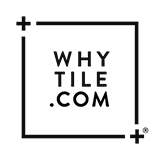Early versions of tile first appeared thousands of years ago. Similar to modern ceramic tile, these early versions were made from naturally occurring regional materials. However, the specific materials, skills, tools, and production methods used for early versions of tile differ from those that are currently used.
Ceramic Building Materials
Creation methods were inconsistent for ancient tile, a period that spanned from about 4,700 B.C. to the end of the Roman Empire around A.D. 500. The makers of the first tiles used various combinations of clay, rocks, sand, and other local materials.
The archeological term “ceramic building material” groups ancient tiles and bricks together. Ceramic building materials weren’t exactly like today’s ceramic tiles but can be considered an early ancestor. These ancient materials have survived thousands of years to prove the durability of even the most simple tile compositions.
The First Tiles
The word “tile” finds its origins in the Latin word “tegula,” meaning “to cover,” and the word “ceramic” comes from the Ancient Greek word “kéramos,” meaning “potter’s earth.”
Some of the first-ever tiles were indeed used to cover and protect buildings. Manufacturers in ancient Mesopotamia (circa 3000 B.C.) made incredibly durable tile bricks by firing clay at high temperatures. These bricks covered building exteriors to protect the buildings from harsh conditions.
Iran Review reports that the glazed bricks and single-colored tiles found at the Royal Gate of Chogha Zanbil (a structure built by the Elamites) are roughly 4,000 years old and are considered the oldest known ceramic tiles. R. Ghirshman, the excavator of the site, named the spot the Royal Gate because of its “large size and because of its decoration of glazed bricks.” Examples of ancient tile used as a decorative art can also be found in Mesopotamia, Persepolis, and Egypt.
The Ancient History Encyclopedia shares another famous example of tile as ancient decorative art: the Ishtar Gate of Babylon (constructed around 575 B.C.). The Ishtar Gate has glazed bricks that form a blue backdrop for intricate tile designs of dragons, lions, bulls, and gods and goddesses of Babylon.
According to Daily Art Magazine, the Ishtar Gate was part of King Nachbuchanezar II’s plan to beautify Babylon and his Mesopotamian kingdom. An inscription on the Ishtar Gate in the voice of Nebuchadnezzar II reads: “I placed wild bulls and ferocious dragons in the gateways and thus adorned them with luxurious splendor that people might gaze on them in wonder.”

Materials to color tiles may not have been readily available to Mesopotamians, and how the tiles were colored is still unclear. One source states that the blue tiles on the Ishtar Gate could actually be made of lapis lazuli, but the specific method of colorization is currently lost with time.

Experts see the early ceramic materials found on the Ishtar Gate as an important early step in the development of ceramic tile, specifically because of the colorization and use of tiles.
These discoveries show us that Ancient Rome (circa 800 B.C. to A.D. 476) was not the first civilization to use tiles, but read on to learn how Rome may be the most well-known civilization to use the precursor of our modern-day ceramic tile.
Delving into the origins of ceramic tile unveils a rich history that has stood the test of time. As you explore the intriguing journey of ceramic tiles, it’s essential to grasp their modern significance. For a comprehensive understanding of ceramic tile benefits and comparison, head over to read that guide too! Elevate your knowledge and appreciation for this timeless material with WhyTile!
